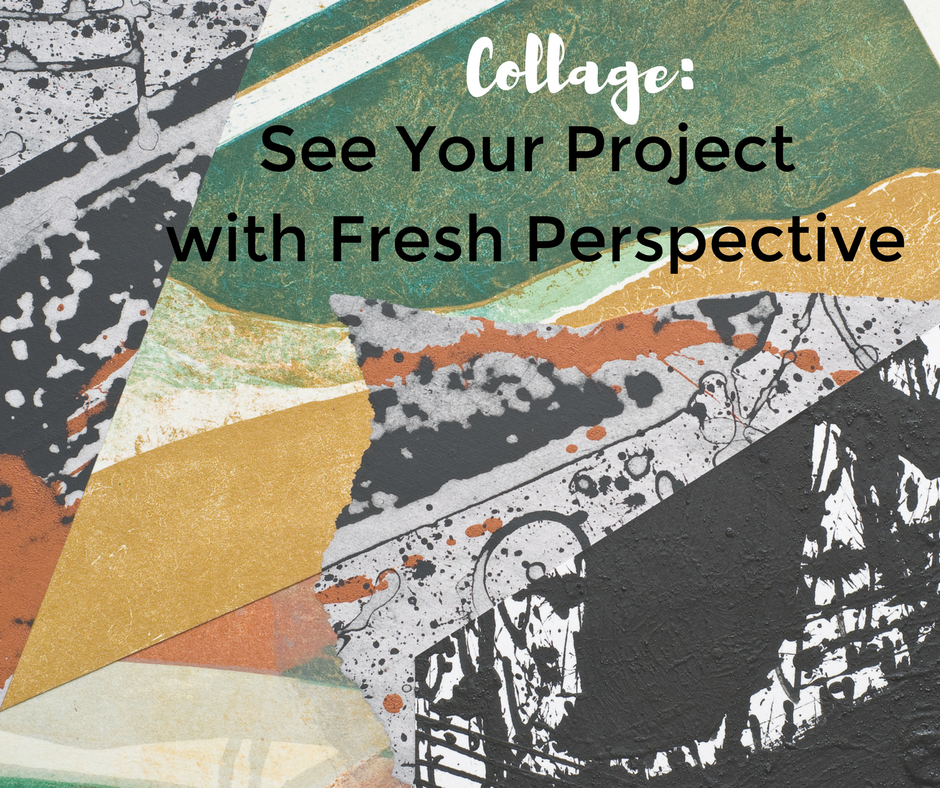by Naomi | Apr 6, 2017 | Creative Life
“Life must be lived and curiosity kept alive.”
– Eleanor Roosevelt –
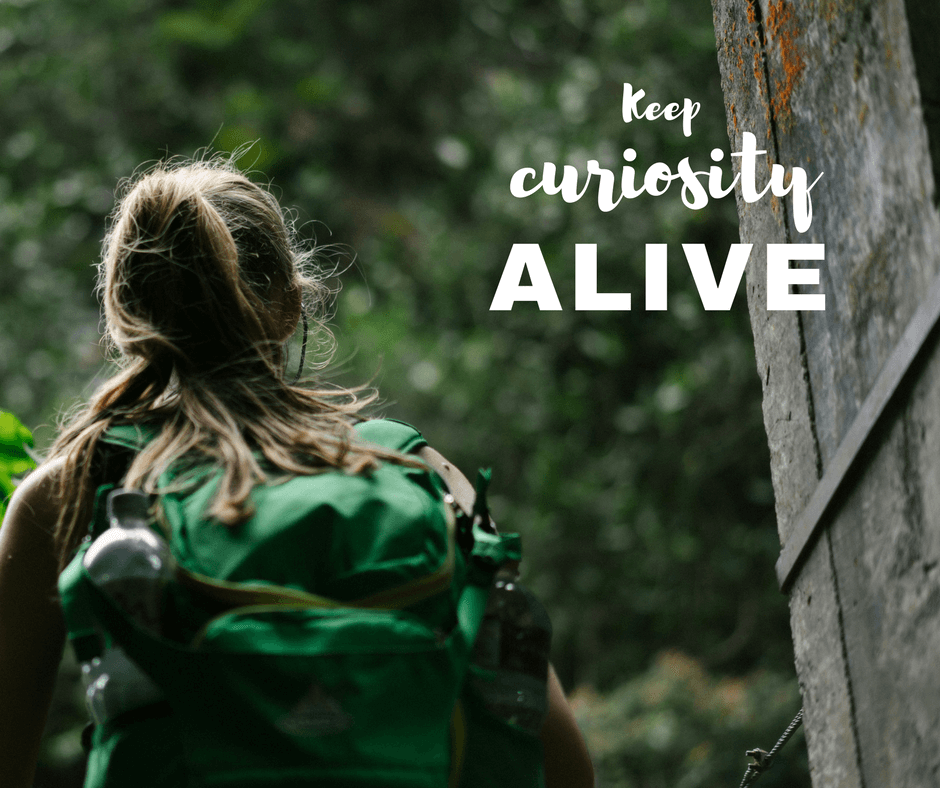
In this article, Eleanor Roosevelt shares her perspective on the importance of curiosity. She notes that curiosity is essential for living fully–it allows us to engage with our world, learn, explore, and find new solutions.
Curiosity is the spark that causes us to look around and connect with one another.
A couple days ago, I listened to a podcast interview with Uli Beutter Cohen, founder of the Subway Book Review project. I’m pretty sure that Uli and Eleanor Roosevelt would have been fast friends. They share a philosophy that every person carries a wealth of stories and life experience. When we are willing to connect, to ask questions, to live a life filled with curiosity, we thrive. What I loved about Uli’s interview was the energy in her voice, the lit-up aliveness that wove through her words as she described her project. She believes that books are an accessory. We put them on like we might put on a hat or scarf. Books may be a more telling accessory than a hat or scarf because they help us get to know a person, especially when the person is willing to share why he or she chose this particular book on this particular day. That’s what Uli’s project is all about: she doesn’t plug into her headphones and tune out on the subway. She asks people about the books they’re reading, and collects stories one at a time.
It’s tempting to look around and think that there are two types of people … the ones who are curious and the ones who are not. It’s more difficult to admit that we each have the capacity for curiosity and the capacity for disinterest. The decision to live with a spirit of curiosity is not a one-time, set-it-and-forget-it choice. That’s why I love the quote from Eleanor Roosevelt above. We must keep our curiosity alive.
What does the care and feeding of curiosity look like?
- Keeping our eyes open
Noticing our surroundings is a choice. It’s a practice, and one that becomes a habit. When we intentionally pay attention to the light in the clouds or the light in faces around us, we are rewarded with beautiful moments. The more we experience those beautiful moments, the more deeply ingrained the habit of paying attention becomes. We teach ourselves the value of an open-eyed approach to life, and with each choice to look around, we remind ourselves of why taking time to notice our world matters.
- Asking questions
When we were three, we asked questions as a way of life. Why was a general response to nearly everything. Then, as we wore down the adults in our lives, we learned to control our inquisitive minds. It’s true that a string of “but why?” questions can be exhausting. When we ask why without any additional context, we place the entire responsibility for knowing the answer on the other person. However, when we ask questions artfully, in a way that invites another person to share their own experience and stories, we aren’t quizzing the world, we’re engaging with it. Like any art, the art of asking questions requires focus and dedicated effort.
- Reflecting on what we see and hear
We reinforce what we focus on. If we focus the majority of our attention on what goes wrong in our lives, our life experience feels like a string of disasters. We remember the irritating email and the car that cut us off on the freeway and the difficult conversation at work. How was our day? From this perspective, it was unhappy. If, instead, we pause and savor the beautiful moments we collect—a story from someone in the elevator, or the exact colors of a sunset, we feel that we live in a world of beauty. Since the difficult situations are usually louder, it takes intention to notice the quieter moments. As with paying attention and asking questions, the effort of reflection is entirely worthwhile. When we reflect, we map a landscape of our lives and our communities that is fueled by—and that further fuels—our curiosity.
When I took my sabbatical last year, I had the opportunity to follow my curiosity. For a full month, I didn’t let a to-do list rule my life. Instead, I let the inner drive that simply wants to know propel me through my days. By the end of the month, I felt whole, calm, restored. What had happened? I’d taken the time to tend to my curiosity, and it made all the difference. I was a little afraid, coming back into my real life, that I would lose that spark as deadlines and expectations settled back in. And sometimes it does feel like I’m losing track of my curiosity. Sometimes I do put my head down and simply push toward finishing a task. Still, that month is fresh in my mind, and it doesn’t take much to set down my work for an hour or two, to tap back into that mindset, and to engage with my world.
How healthy is your curiosity right now?
Have you been able to tend it recently? Do you need a day to wander and to let your questions lead the way? It’s not a waste of time, not even a little bit. So, just in case you need permission … permission granted. Go on, go have an adventure. Let the world surprise you. And once you’ve had your adventure, come on back and share your story with me. I’d love to hear about your experience. Comment below, or connect with me on
Facebook or
Twitter. Let’s follow our curiosity and see where it leads us!
by Naomi | Apr 3, 2017 | Creative Life
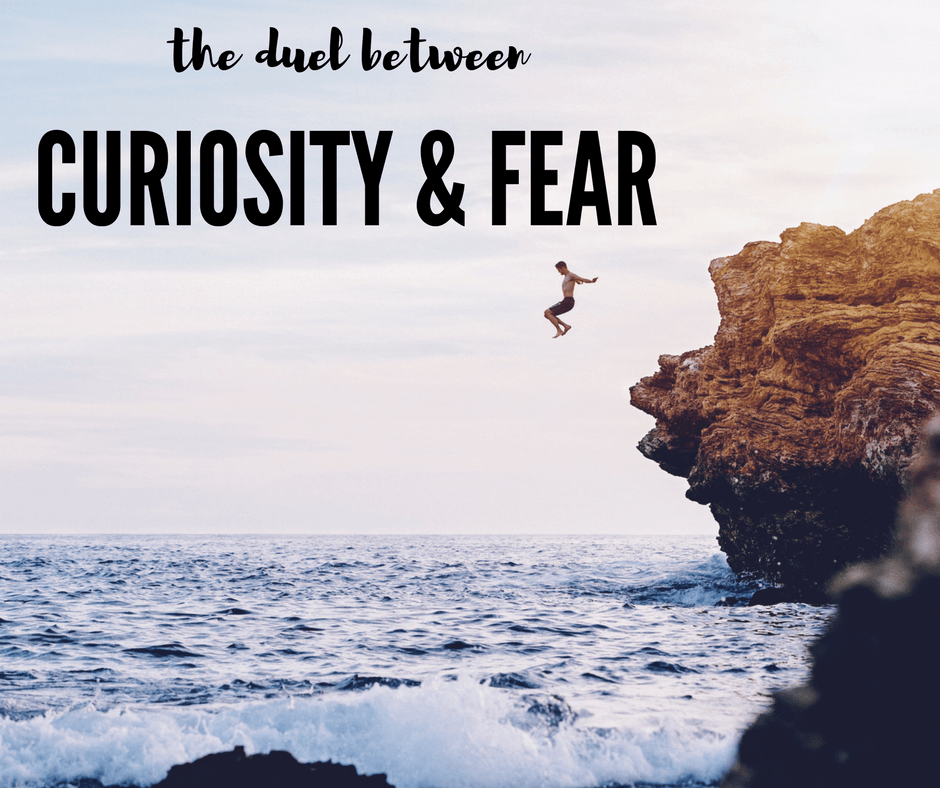
When curiosity faces off with fear, which team do you cheer on?
Your knee-jerk answer may be, “Curiosity, of course.” Curiosity has a positive feel to it, and we know that studies, like this one, show that curiosity helps us learn more effectively.
Do you act on your curiosity, though?
Fear is built into our DNA. It’s there for a reason: to save our lives in dangerous situations. When we wonder what it will feel like to dive into a deep pool from a cliff’s edge, our fear pipes up for our own good. Erring on the side of curiosity in life-threatening situations will eventually catch up with us. Maybe this cliff dive is safe, but will the next one be? How about the one after that?
Many people want to follow their curiosity, but in real-life situations, they follow their fear. In a cliff-dive situation, the decision to err on the safe side may be the better choice. However, the majority of fear-based choices aren’t life or death ones. What’s at risk is embarrassment or the possibility of failure.
When have you backed away from a cliff’s edge and missed an opportunity for growth?
Last week, I had the privilege of being a part of a story circle exercise with a group of fourth and fifth grade students. We each told stories about a time we had tried something new, and after we had listened to all of the stories, we compared notes. Many of the stories had elements of danger to them. Curiosity didn’t always come out as the hero. However, I noticed that in stories where safety wasn’t the issue, where the situation was more of a self-imposed boundary, the decision to take action required two parts.
First, the person had to imagine him or herself as the kind of person who could take this sort of risk.
Standing in the line to ride a roller coaster, waiting a turn to swing on a rope over a lake, listening in the dark backstage for a cue, we watch a mental movie of what might happen. If we allow fear to be the director of the movie, we watch a worst-case-scenario highlight reel. If we allow curiosity to be the director, we watch a possibility-filled show. Often, the two battle it out for the director’s seat, so we watch a story that swings back and forth wildly between the two.
Then, comes the true moment of decision.
We may have dared to stand backstage or to wait in line, but will we step into the stage lights or pull down the bar that locks us into the roller coaster seat? The choice depends on the movie we’ve watched. What do we believe will happen?
If we’re not aware of the power of that mental movie, we leave the director up to our subconscious. We let fear and curiosity duel without any oversight. Too often, fear wins. Fear’s powerful question, “Why risk the consequences?” runs the show.
Why risk the consequences?
Fear’s list of consequences includes embarrassment, wounded pride, and even painful failure. If you line those possibilities up against the consequences of ignoring your curiosity–missed opportunities, getting stuck in the same-old, same-old, and never exploring your capacity–which would you rather risk?
For many, a fear-directed life is a regret-filled life.
Our fear is more powerful than we think, and it takes the director role more often than we’d prefer. We don’t realize how often we’re creating a reality for ourselves because we’re so sure that this is the way life is. That’s fear, directing our lives, keeping us within safe boundaries so that we don’t embarrass ourselves. What might be possible if we risked a little short-term discomfort? Wouldn’t it be interesting to explore our personal and collective capacity? What’s beyond all of those self-imposed limitations?
Sometimes your fear ought to win. It is wise to check the water’s depth before diving off a cliff. However, curiosity deserves room to play, too, if only to offer an alternate perspective. When that mental movie kicks in, consider asking these three questions to give curiosity a fighting chance.
Questions to fuel your curiosity:
- What are the true risks of this opportunity?
- What might this opportunity make possible?
- Do the possibilities outweigh the risks?
When we try something new and fail, we learn firsthand what failure will mean. We might skin our knees or feel ridiculous in front of a crowd. Then comes the inevitable next question. What’s next? We bandage our knees or take a red-faced bow, and then have the opportunity to try again. We discover that while skinned knees hurt, they don’t have to stop us. In fact, we realize that we learned something in that first failed attempt about the way we need to jump. The skinned knees actually led to our ability to not skin our knees next time. Maybe we won’t land the second jump or the third, but as we learn more and more, we also strengthen our resolve. We see that many of the possibilities that fear throws out are ho-hum. True, we might feel a little pain, but we also feel a corresponding thrill of possibility. We might actually be able to do this thing that we thought was impossible. And if this impossible thing can be done … what then?
What then?
I’d love to hear your stories about how curiosity and fear have battled it out in your life. How do you know when to lean toward curiosity, and how do you know when to listen to fear’s wisdom? Do you have strategies for revising your mental movie when fear unhelpfully seizes the floor? Share below, or connect with me on Facebook or Twitter. I always love hearing from you.
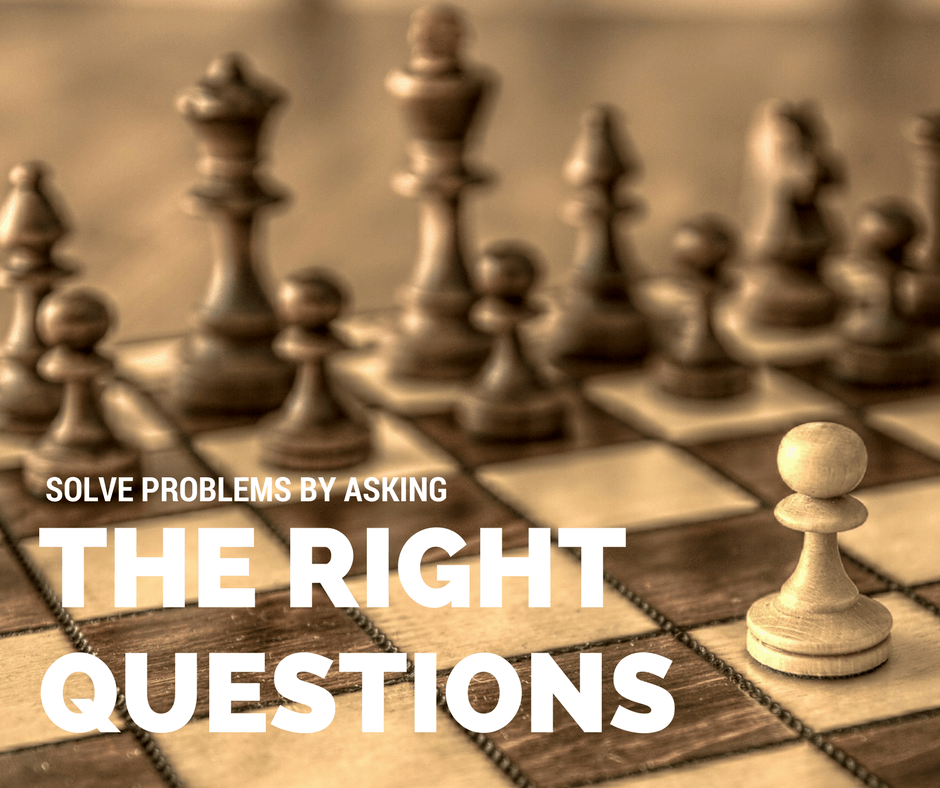
by Naomi | Mar 30, 2017 | Creative Life
When you ask the wrong questions, you end up with the wrong answers. Seems logical enough, right? Most of us don’t intentionally ask the wrong questions. However, just because we don’t intend to ask low-value questions doesn’t mean we don’t ask them.
Here are a few sneaky questions that might pop up from time to time:
- Why is everyone else succeeding faster than me?
- Why didn’t I get started on this project sooner?
- Why is this project so challenging?
- What should I do about this mess?
- When will things start working out?
- What’s wrong with me?
Questions such as these may seem like a tiny, not-so-helpful habit. The truth is, questions such as these can completely derail us. Why? Because our mind goes to work on solving the questions we feed it. So, instead of tackling our problems, our mind is doggedly mapping out wrong turns, or collecting reasons to support our unintentional belief that nothing is ever going to change in our lives.
It’s not enough to realize that these questions aren’t helping us.
Knowing we shouldn’t do something usually doesn’t stop us from doing it. In fact, if we focus on the questions we shouldn’t ask, we’ll end up being unable to avoid thinking about them. If, instead, we have a strategy to help us find more positive, helpful questions, we will have a clear way to address any negative questions that arise.
When you find yourself in a low-value question spiral, ask yourself:
- Is this question pointing out a real problem?
- If yes, move on to question two.
- If no, release the question and go do something playful or active. Move into a new, more optimistic space.
- What is the real problem?
- State the problem in clear language, such as “I’m frustrated with how long it is taking me to finish the script I’m writing.”
- Review your past experiences. When have you had a win in a similar situation?
- Think expansively. Maybe you’ve never finished a script before, but you have finished a project of some kind.
- Keep reviewing until you find three examples of (even loosely) similar wins and look for commonalities between the situations. What seems to work for you?
- Take note of situations where you definitely didn’t succeed. They may add an important element to your ultimate question.
- Shape what you’ve discovered into a clear, specific question.
- Your question might now sound like, “How might I give myself a motivating deadline that doesn’t make me feel like I can’t breathe?
- Brainstorm elements of this question so that you can break the problem into smaller, easy-to-handle questions.
- Answer your big question by tackling these smaller questions one at a time.
- Your set of questions might look like:
- WHY is this project important? What big-picture vision can I tap into? What will finishing this project mean for me and for others?
- WHAT are the milestones between where I am and my completed project?
- HOW LONG does it normally take me to write one scene?
- WHEN might I expect to be done, given the milestones I’ve determined and my regular writing speed?
- WHO might help me stick to my goal?
- WHERE might I get stuck? What strategies might I use to overcome my obstacles?
The right question can transform an impossible roadblock.
A set of questions such as this can turn a desperate plea such as “Why is this project so challenging?” into a manageable situation. However, unless you’re superhuman, it’s unlikely that your first impulse in the midst of a crisis is to ask productive questions. That’s why the first four steps are essential. Once you have gently moved yourself out of downward-spiral thinking into a more confident, optimistic space, you are able to tap into the wisdom that’s there, inside you, waiting to be uncovered. No one is as much an expert on you as YOU. You know what works for you and what doesn’t. All you need is the reliable process to help you find what you knew all along.
What unhelpful question have you been wrestling with lately? How might this process bring momentum to a blocked area of your life? Go ahead and try it out, and then come back and let me know how it goes! I’d love to hear your story. Tag me on Instagram or Twitter.
by Naomi | Mar 27, 2017 | Creative Life
Creativity often shows up at the intersection of various thoughts. Here are three about following your curiosity … where do they lead you?
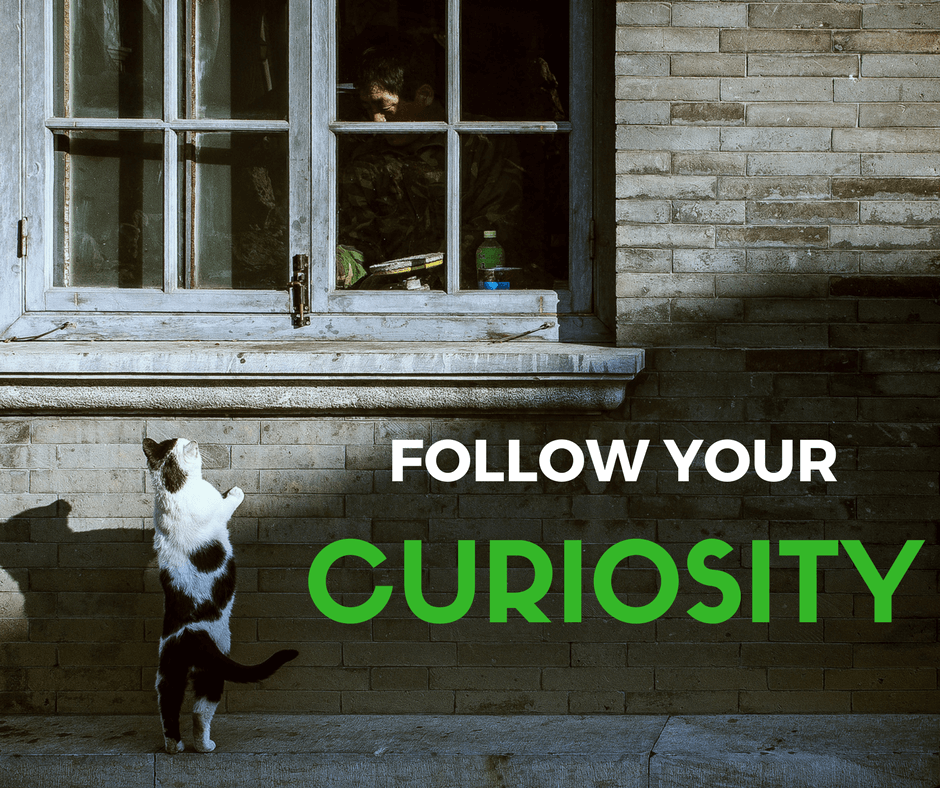
“We have to continually be jumping off cliffs and developing our wings on the way down.”
― Kurt Vonnegut
“The real voyage of discovery consists not in seeking new landscapes, but in having new eyes.”
― Marcel Proust
“People never learn anything by being told, they have to find out for themselves.”
― Paulo Coelho
Feeling inspired, but want more? Explore more quotes (and images) on curiosity on this Pinterest board.
by Naomi | Mar 23, 2017 | Creative Life
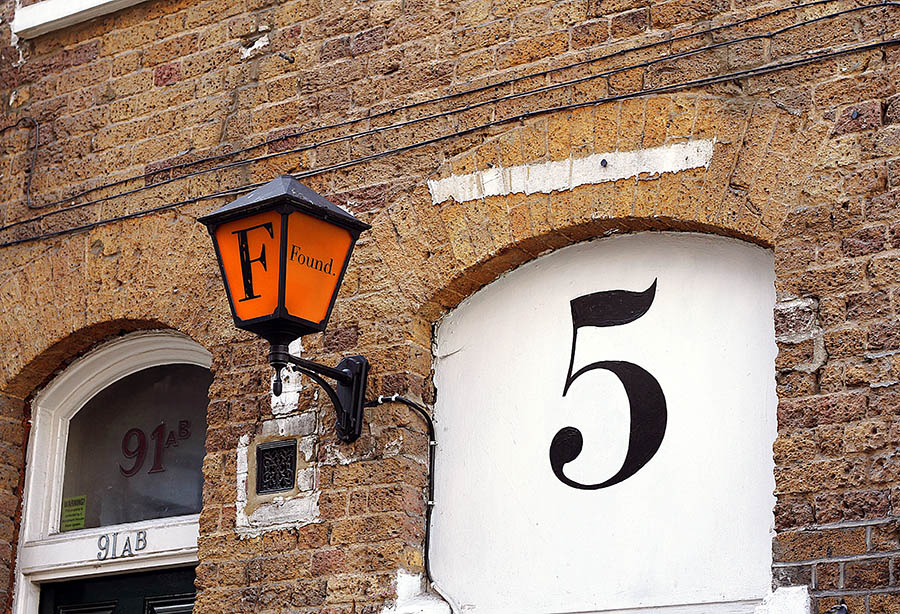
You’ve probably heard at least one of these truths:
- Violent behavior is reduced when a person has the vocabulary to describe his or her emotional experience.
- Goals are more likely to be achieved simply because we have written them down.
- Journaling leads to resilience and stronger emotional health.
Each of these claims is backed by research. For instance, this study explores how a stronger, more expressive vocabulary tends to reduce aggressive behavior in toddlers. In general, the trend continues as children age.
If language helps us interact positively, achieve our goals, and live a healthy life, it’s clearly a powerful tool. Words seem so innocuous, though. They’re part of our daily life–a part we largely take for granted. What would happen if we paid just 10% more attention to our language?
Language to Make Us More Effective
What if, for instance, we thought mindfully about the words we put into an email? In his book, Deep Work, Cal Newport notes the difference between a tossed-together email and a more thoughtful one. Consider the difference between these two hypothetical responses:
Hey Peter,
Sure, I’d be happy to get together to discuss that idea we talked about at the conference. Let’s schedule a coffee.
OR
Hey Peter,
Sure, let’s discuss. I suggest:
- We each summarize our thoughts and bring our notes to our meeting. Let’s make sure to capture ideas on the audience, the approach and the team.
- We meet, outline a plan for our proposal, and set action steps.
- We aim to send the proposal out by the end of the month.
What do you say we meet at Convergent Coffee next Wed. 11 am? If that time doesn’t work for you, feel free to suggest another couple times that do.
Language to Help Us Connect
Or, on the opposite end of the emotional spectrum, what if we spent a few extra moments considering a compliment to a friend? Our first impulse might be:
Yummy dinner! Thanks.
But what if we said:
The spice of the jalapeño combined with the sweetness of the pineapple made your rice extra special. Thanks for putting time and creativity into our meal!
Why Consider Our Words?
Words are free, but taking the time to use them well requires extra thought. That extra thought is well worth the effort if it helps you strengthen a friendship or saves you significant amounts of time.
Well-considered words can help us:
- Connect with one another
- Reflect on our experiences
- Clarify our goals
- Request focused feedback
- Frame collaborative brainstorming
- Solve conflict
- Empower others
- Reflect the truth back to someone we love
And this list is only the start.
How might you change your life or the lives of others with your words this week?
I’d love to hear your thoughts! Share with me on Facebook or Twitter, or in the comments below.
by Naomi | Mar 20, 2017 | Creative Life
Creativity often shows up at the intersection of various thoughts. Here are three that play with the power of language … what do they spark for you?
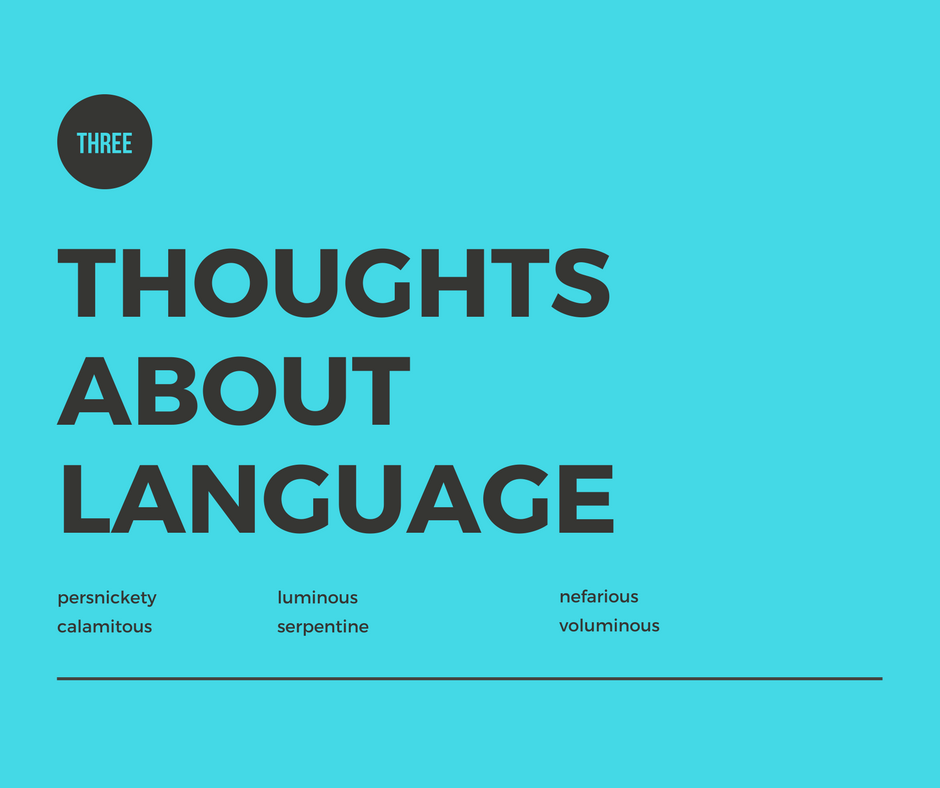
“Human speech is like a cracked kettle on which we tap crude rhythms for bears to dance to, while we long to make music that will melt the stars.”
― Gustave Flaubert, Madame Bovary
“The limits of my language mean the limits of my world.”
― Ludwig Wittgenstein
“If you talk to a man in a language he understand, that goes to his head. If you talk to him in his language, that goes to his heart.”
― Nelson Mandela
by Naomi | Mar 16, 2017 | Creative Life
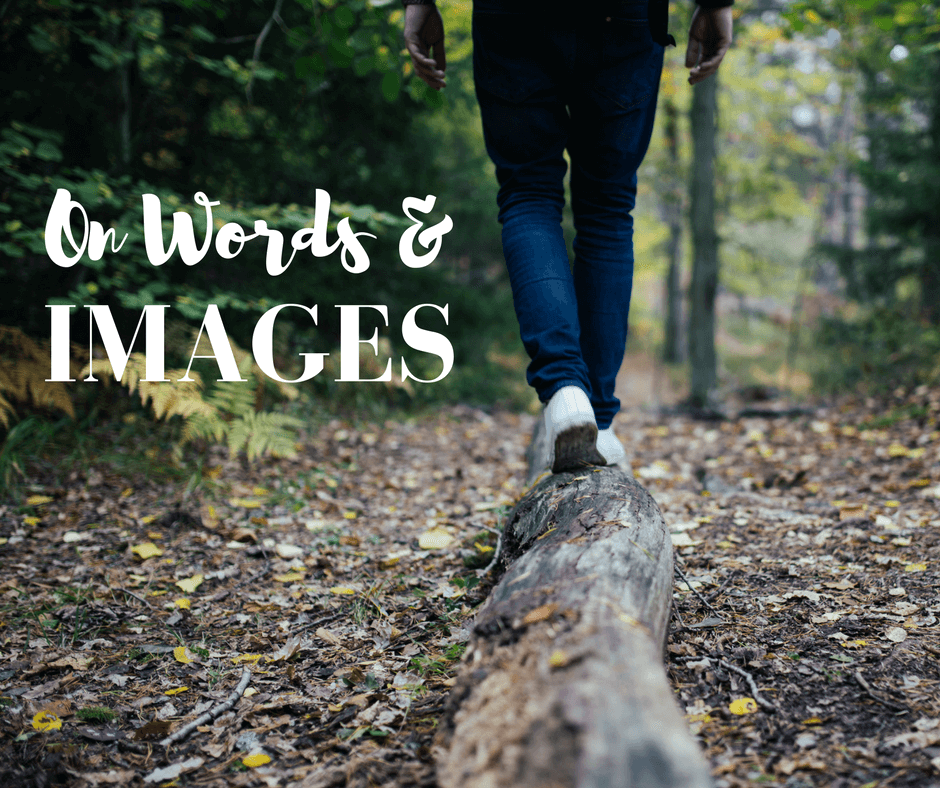
I’ve made a discovery.
You probably made this discovery long before I did, but there’s a reason we say “I couldn’t see the forest for the trees.” Sometimes we’re too close to something to see the big picture.
On the Writerly Play blog, I am writing about developing creativity, and about how story helps us see ourselves and our growth more clearly. Yet, at the heart of every post, whether I’m exploring practical strategies, playful activities or mindset, I’m actually writing about balance.
I’m writing about the space between.
In order for creativity to thrive, we need both structure and play. For instance, story provides a general structure, but playing within that structure makes a story unique, surprising, and engaging.
For the past couple weeks, I’ve been writing about visual literacy. I’ve been making a case for communicating a vision in a visual way. Now, I am swinging the pendulum back the other way in order to explore the power of language. Visual literacy is important, and so is verbal literacy. Both are creative. Both are powerful.
What matters is the balance between the two.
If we decide words ought to be avoided, that infographics are the communication medium of the future, we lose the complexity of beautifully well-crafted sentences. If, on the other hand, we insist on pages of unbroken text when an image would have made our meaning immediately clear, we’ve lost a significant point of connection.
Painting and drawing have been a part of my life since I was young, but my artistic medium, the one that fits just-so, is the medium of words. I love playing around with images, with music, with color and rhythm and yes, balance. But when I need to express an idea, to put it out into the world and share it, I turn to words.
Yesterday, I stumbled across a love letter. You may have already seen it, but if you haven’t, you absolutely must read Amy Krouse Rosenthal’s love letter to her husband. This letter is an exquisite example of the power of language. Reading it, I was reminded of the reason words matter to me so very much. It’s partially because of the way that carefully chosen words communicate. It’s also because our words can be gifts.
Our words have a little bit of magic in them.
Words can change the way a person sees herself or her situation. When her perception changes, her focus changes. Since our experience of life relies so heavily on where we place our attention, this shifting focus can change our life. Literally. And thus, words might as well be magic beans. When the circumstances are right, we can plant them in others’ lives and watch magic grow.
What will you do with your words today?
With my words, I enjoy planting the seeds of one question asked in a thousand different ways. What if we looked at it this way? Or that way? To balance, one must constantly make tiny adjustments. A life well-lived has this element of adjustment in it as well. Fresh perspective asks something of us. A new idea knocks us out of our comfort zone, swinging the pendulum toward the opposite pole. As we swing back and forth, we work at navigating a middle ground. This middle ground isn’t simple. Staying balanced in that space takes active, mindful work. And yet, playing in that tension-filled space, that’s the art of living life well. That active, mindful space is where Writerly Play lives.
I’d love to hear from you, on language, or images, or the space between. Share below, or connect with me on Facebook or Twitter.
With love and creativity!
by Naomi | Mar 13, 2017 | Writerly Play Activities
Visit the Writerly Play Studio and gain fresh perspective on your project with this visual thinking activity. Never heard of the WP Studio? Learn how Writerly Play thinking strategies supercharge your creativity here.
Wondering about your vision for a project, a vacation, a relationship, a character? Try creating a collage! Give your verbal thinking a break and let images lead the way. The answers you stumble across may surprise you.
Try This:
- Grab a stack of old magazines.
- Choose a focusing question for your collage, such as “What do I want my vacation to feel like?”
- Flip through the magazines and tear out any images that speak to you. If words leap off the page at you, tear those out as well, but focus on images first. Don’t forget to consider color, texture and shape. These more abstract elements can add insights to your collage.
- Once you have a pile of images, sort through and start to arrange them into a coherent collage. You may want to go back and look for items that now seem important to round out the idea.
- Use scissors and glue to cut and paste the images onto a thick sheet of paper.
- If you decide you need additional words, go back and find the words, or find letters so you can spell out the words. Or, be creative and create letter forms of your own to layer over your images.
- Once your collage is complete, share it with a friend. When you articulate the meaning behind what you have created, you will become even more aware of what the collage means.
- Before you put the collage away, ask yourself, “What actions might I take, now that I have this insight?” Take advantage of the insights that your playful mind has provided.
Note: I’d highly recommend magazines over a Google search. In a magazine, you’re likely to stumble across an image you’re not expecting, and surprises often lead us to the most compelling insights.
by Naomi | Mar 7, 2017 | Creative Life
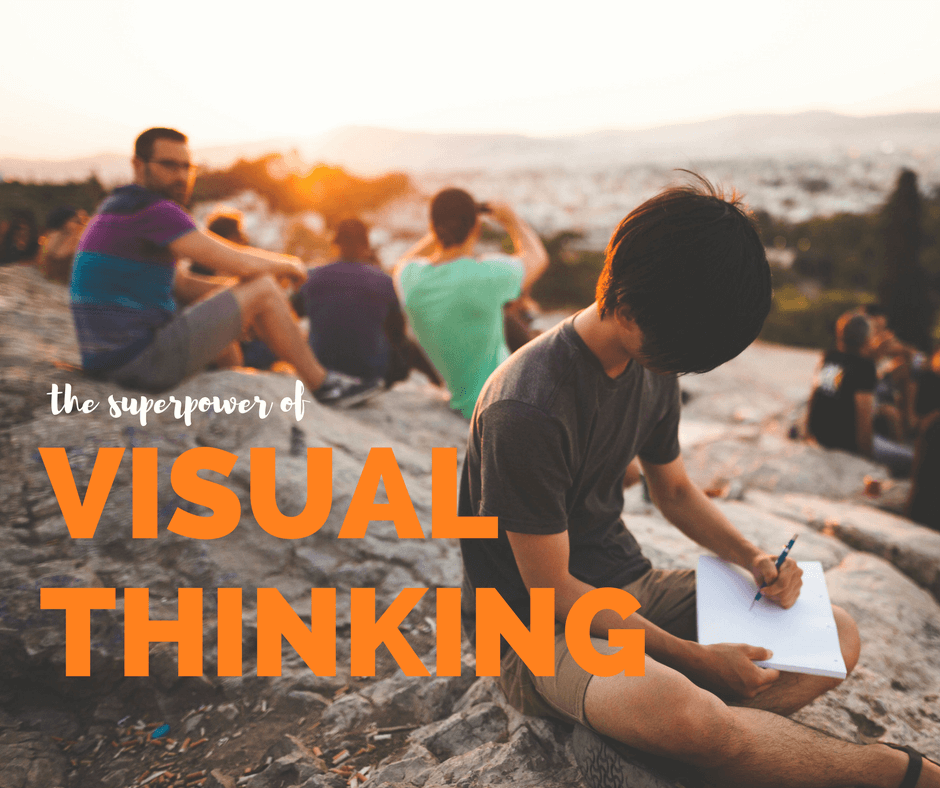
Visual thinking is a superpower that is often:
a. under utilized
or
b. completely ignored
Now, if you’re thinking–Visual thinking is for illustrators or architects, maybe for children, but not for me—stick with me for a moment. Growing up, I’ll bet that you struggled (at least a little) with either letters or numbers. If a teacher had allowed you to give up, saying, “I’m not a math person,” or “I simply can’t read,” you’d have breathed a sigh of relief at the time. But, consider what would have happened if you had opted out of math or reading and writing entirely. We know that the ability to think in numbers or to think in letters is key. However, somewhere along the way, we’ve forgotten the importance of thinking in images. We’ve allowed over half of the adult population to believe untruths such as, “I can’t draw.”
Why is visual thinking important?
Sunni Brown, author of the fantastic book, The Doodle Revolution, puts it this way: “A doodler is connecting neurological pathways with previously disconnected pathways. A doodler is concentrating intently, sifting through information, conscious and otherwise, and–much more often than we realize–generating massive insights.”
Howard Gardner identified visual intelligence as one of many intelligences. Linguistic intelligence and mathematical/logical intelligence are also on that list. It is true that different brains have different strengths. However, the fact that I don’t have a naturally mathematical brain does not negate my need to think and conceptualize in numbers. Linguistic skill is obviously key to my capacity as an author and the Executive Director of a literary nonprofit, but numbers are also a daily part of my work. I’m grateful for teachers who insisted I not give up on numbers simply because I did not have a strong inclination toward them.
The point is, many of us have decided we aren’t comfortable with visual thinking and thus, we’ve dismissed an entire literacy that could have been at our disposal. We’ve dismissed thinking in images because it is for other people or worse, childish. We’ve given ourselves permission to not conceptualize big ideas in sketch form, or via visual metaphor. We’ve limited our capacity for thinking big thoughts because … why? For most of us, it comes down to the ability to draw.
Most adults are afraid to draw.
Somewhere along the way, maybe in elementary school, someone pointed out that our horse didn’t really look like a horse. We noticed that our lines were wavy or our circles were lopsided. We expected ourselves to be photo-realistic artists, and for the most part, we expected this to happen instantly, magically, with no official training or concerted practice.
For the record, in order to think visually, you do NOT have to be an amazing artist. In fact, if you don’t want to, you never have to show your doodles to anyone else. However, I’d strongly, strongly encourage you to take a month and play around with doodling. See what comes out of it, and if you aren’t seeing results after giving it a real try, then let it go. My bet, though, is that you will be a visual thinking convert.
Visual thinking will help you in many ways.
If you’re willing to give this a go, I’d highly recommend your checking out Sunni Brown’s book. She provides research, inspiration for the mindset needed and practical strategies–everything you will need for your experiment. If you need a little nudge, though, here are some reasons why visual thinking will absolutely help you.
- When you draw, you externalize your thinking. We can only focus on a thought for a short amount of time before it is gone. Drawing a concept out on paper allows us to stick with the idea, to follow it where it leads.
- Images tap into figurative thinking. In order to make a concept, say freedom, into an image, we have to answer the question, What does freedom look like? This question, in and of itself, is useful as it brings new thinking to the table. When we nail down abstract thinking into concrete images, we start to see a path between our goal and what it might look like in real life.
- Images communicate quickly. There’s a reason for the explosion of infographics as of late. We can absorb information laid out in a combination of words and images much more quickly than we can read and comprehend long paragraphs (such as the paragraphs that make up this blog post, much to my chagrin)!
Need a tiny extra nudge?
Listen to your language over the next couple weeks. Notice if you use phrases such as, “I can’t see it happening,” or “If I could just see my workload,” or in response to a colleague’s idea, “What will that look like?” These phrases are clues that you are a visual thinker. You want to be able to mentally see something. Though your imagination is a strong tool for doing so, bringing that image out into the physical world will be even more inspirational. What you can imagine, you can draw. What you can draw, you can see. What you can see, you can make practical. And what you can make practical, you can make happen.
What does the superpower of visual thinking accomplish? Visual thinking will help you imagine ideas, see them, and bring them to life. Not too shabby as superpowers go, right?
My challenge to you is this:
Give yourself a month to play around with visual thinking. Use The Doodle Revolution if books help you explore new ideas. If not, simply take out pencil and paper and sketch the next time you’re planning or brainstorming. Conceptualize with a combination of words and images. Even when you don’t have pencil and paper in hand, play the “What does that look like?” game. Picture concepts such as creativity or hope in image form. Then, once you’ve played around, come back and share what you’ve noticed or learned. Or share with me on Facebook or Twitter. Let’s learn together! I can’t wait to chat with you. As you can probably tell, this is a subject of intense passion for me.
Here’s to you and your creative insights!
by Naomi | Mar 2, 2017 | Creative Life
Creativity often shows up at the intersection of various thoughts. Here are three on the intersection between words, images, and thought … how do you use visual thinking in your creative process?
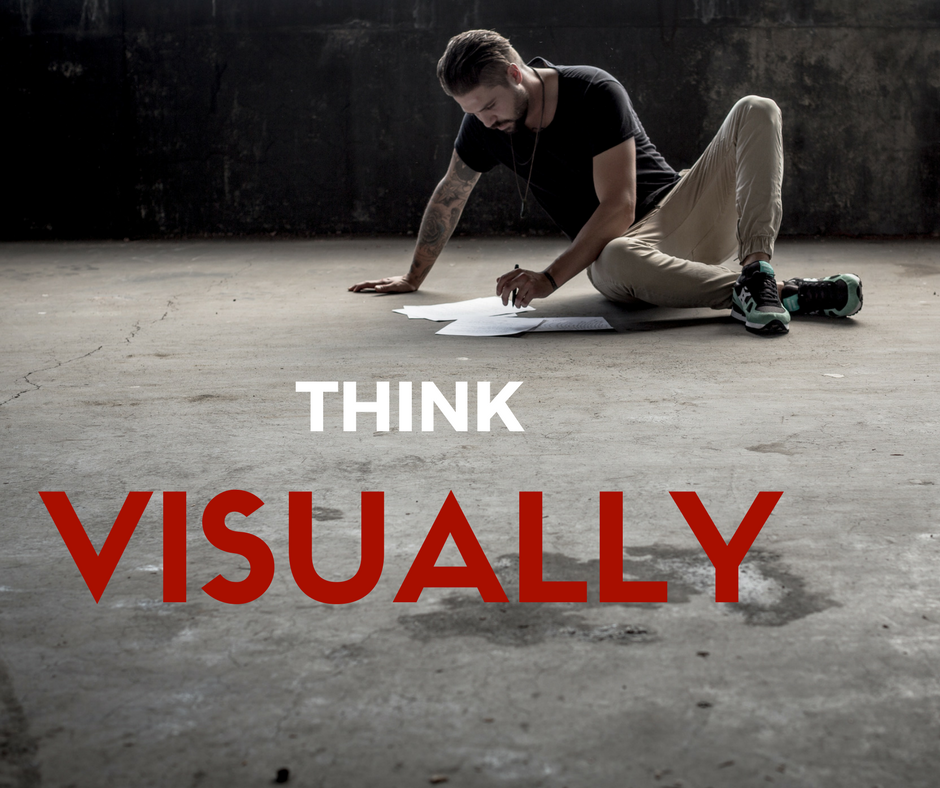
“Writing is the painting of the voice.” – Voltaire
“I love the interplay between words and pictures. I love the fact that in comics, your pictures are acting like words, presenting themselves to be read.” – Gene Luen Yang
“I use doodling for a variety of reasons: I use it to get clarity around a concept, I use it to relax, I use it to communicate ideas with others and get their refinement of them, I use it to map complex systems for companies, I use it to run innovation games for business, I use it to get insight on something puzzling me.” – Sunni Brown








